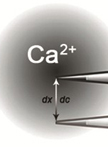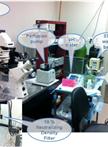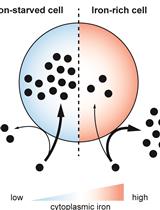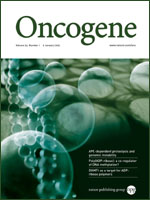- Submit a Protocol
- Receive Our Alerts
- EN
- EN - English
- CN - 中文
- Protocols
- Articles and Issues
- For Authors
- About
- Become a Reviewer
- EN - English
- CN - 中文
- Home
- Protocols
- Articles and Issues
- For Authors
- About
- Become a Reviewer
Measurement of Free Cytosolic Calcium Concentration ([Ca2+]i) in Single CHO-K1 Cells
Published: Vol 2, Iss 22, Nov 20, 2012 DOI: 10.21769/BioProtoc.294 Views: 13038

Protocol Collections
Comprehensive collections of detailed, peer-reviewed protocols focusing on specific topics
Related protocols

Measurement of Extracellular Ca2+ Influx and Intracellular H+ Efflux in Response to Glycerol and PEG6000 Treatments
Tao Li and Baodong Chen
Sep 20, 2013 9681 Views

A Protocol for Measurement of Intracellular pH
Iman Saramipoor Behbahan [...] Siavash K. Kurdistani
Jan 20, 2014 22619 Views

Analyzing the Quenchable Iron Pool in Murine Macrophages by Flow Cytometry
Michael Riedelberger and Karl Kuchler
Mar 20, 2020 5321 Views
Abstract
This is a protocol to analyze the functional response of single CHO-K1 cells to a given treatment in terms of changes in free cytosolic calcium concentration ([Ca2+]i). This is possible by using the Ca2+ indicator dye Fura-2 AM, a polyamino carboxylic acid that binds to free intracellular calcium and is excited at 340 nm and 380 nm. The ratio of the emissions at 505 nm after excitation with those wavelengths is directly correlated to the amount of intracellular calcium. This protocol can be applied to other cell types (cell lines or primary cell cultures) by changing the culture conditions accordingly to the cell type.
Keywords: Intracellular pathwayMaterials and Reagents
- Ca2+ indicator dye Fura-2-acetoxymethyl ester (Fura-2 AM) (Molecular Probes)
- Phenol red-free DMEM
- NaHCO3
Equipment
- 25 mm round glass coverslips
- Nikon Eclipse TE200-E microscope with attached back thinned-CCD cooled digital camera (ORCAII BT; Hamamatsu Photonics)
Software
- MetaFluor Software (Imaging Corp)
Procedure
- Plate 50000 CHO-K1 cells/ml onto 25 mm round glass coverslips for 24 h.
- Load the cells with 2.5 μM of the Ca2+ indicator dye Fura-2 AM (Molecular Probes) in phenol red-free DMEM containing 20 mM NaHCO3 (pH 7.4).
- Incubate 30 min at 37 °C.
- Wash with phenol red-free DMEM and incubate in phenol red-free DMEM containing 20 mM NaHCO3 (pH 7.4) for 15 min (to allow the hydrolysis of the ester group).
- Mount the round glass coverslip with the cells on the stage of a Nikon Eclipse TE200-E microscope.
- Add 300 μl of phenol red-free DMEM containing 20 mM NaHCO3 (pH 7.4).
- Localize the cells to be recorder (as many as possible) and mark them as well as 2-3 background regions using the MetaFluor Software.
- Acquire images of the loaded cells under a x40 oil immersion objective during exposure to alternating 340- and 380-nm light beams, and measuring the intensity of light emission at 505 nm every 5 sec.
- After 30-40 sec where the baseline is stablished, add the treatment (300 μl) whose effect want to be proven, and continue recording.
- Changes in [Ca2+]i after treatment administration are recorded as background substrates ratios of the corresponding excitation wavelength (F340/F380) using MetaFluor Software.
Acknowledgments
This protocol is adapted from Cordoba-Chacon et al. (2010); Cordoba-Chacon et al. (2011) and Duran-Prado et al. (2012).
References
- Cordoba-Chacon, J., Gahete, M. D., Duran-Prado, M., Pozo-Salas, A. I., Malagon, M. M., Gracia-Navarro, F., Kineman, R. D., Luque, R. M. and Castano, J. P. (2010). Identification and characterization of new functional truncated variants of somatostatin receptor subtype 5 in rodents. Cell Mol Life Sci 67(7): 1147-1163.
- Cordoba-Chacon, J., Gahete, M. D., Pozo-Salas, A. I., Martinez-Fuentes, A. J., de Lecea, L., Gracia-Navarro, F., Kineman, R. D., Castano, J. P. and Luque, R. M. (2011). Cortistatin is not a somatostatin analogue but stimulates prolactin release and inhibits GH and ACTH in a gender-dependent fashion: potential role of ghrelin. Endocrinology 152(12): 4800-4812.
- Duran-Prado, M., Bucharles, C., Gonzalez, B. J., Vazquez-Martinez, R., Martinez-Fuentes, A. J., Garcia-Navarro, S., Rhodes, S. J., Vaudry, H., Malagon, M. M. and Castano, J. P. (2007). Porcine somatostatin receptor 2 displays typical pharmacological sst2 features but unique dynamics of homodimerization and internalization. Endocrinology 148(1): 411-421.
- Duran-Prado, M., Gahete, M. D., Hergueta-Redondo, M., Martinez-Fuentes, A. J., Cordoba-Chacon, J., Palacios, J., Gracia-Navarro, F., Moreno-Bueno, G., Malagon, M. M., Luque, R. M. and Castano, J. P. (2012). The new truncated somatostatin receptor variant sst5TMD4 is associated to poor prognosis in breast cancer and increases malignancy in MCF-7 cells. Oncogene 31(16): 2049-2061.
- Martinez-Fuentes, A. J., Moreno-Fernandez, J., Vazquez-Martinez, R., Duran-Prado, M., de la Riva, A., Tena-Sempere, M., Dieguez, C., Jimenez-Reina, L., Webb, S. M., Pumar, A., Leal-Cerro, A., Benito-Lopez, P., Malagon, M. M. and Castano, J. P. (2006). Ghrelin is produced by and directly activates corticotrope cells from adrenocorticotropin-secreting adenomas. J Clin Endocrinol Metab 91(6): 2225-2231.
Article Information
Copyright
© 2012 The Authors; exclusive licensee Bio-protocol LLC.
How to cite
Gahete, M. D., Luque, R. M. and Castaño, J. P. (2012). Measurement of Free Cytosolic Calcium Concentration ([Ca2+]i) in Single CHO-K1 Cells. Bio-protocol 2(22): e294. DOI: 10.21769/BioProtoc.294.
Category
Cell Biology > Cell-based analysis > Ion analysis
Do you have any questions about this protocol?
Post your question to gather feedback from the community. We will also invite the authors of this article to respond.
Tips for asking effective questions
+ Description
Write a detailed description. Include all information that will help others answer your question including experimental processes, conditions, and relevant images.
Share
Bluesky
X
Copy link









